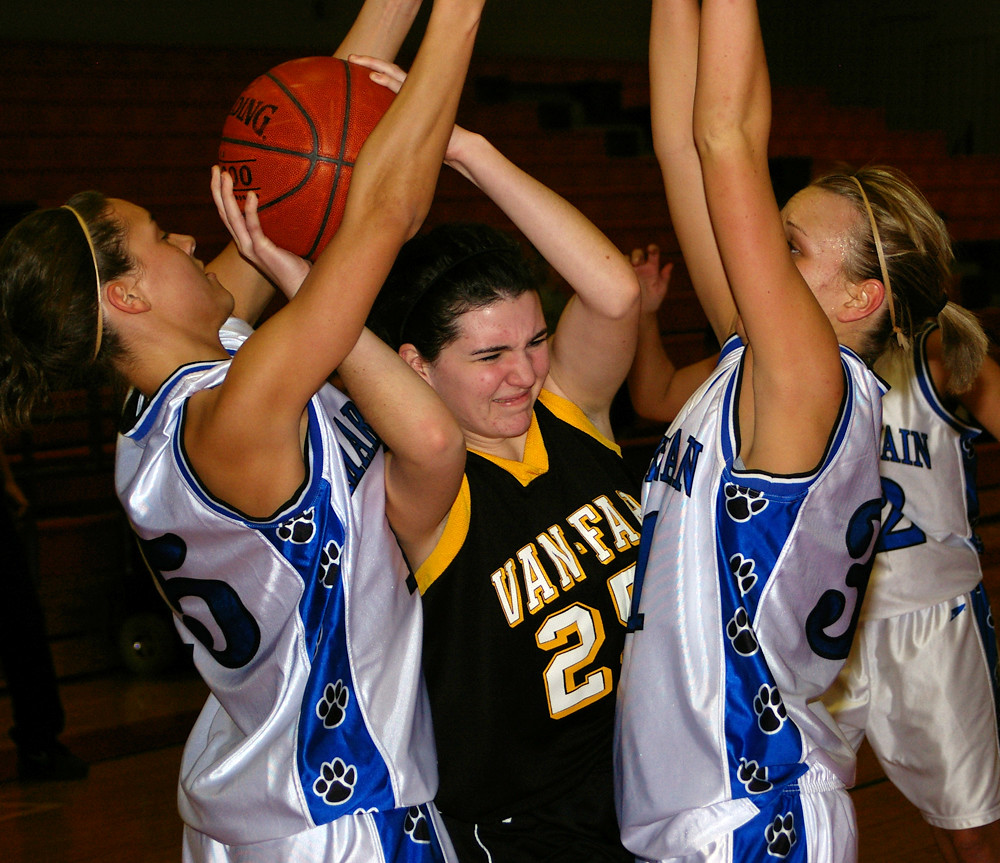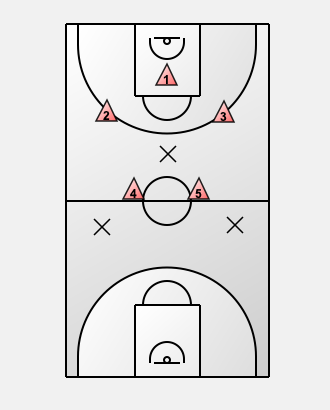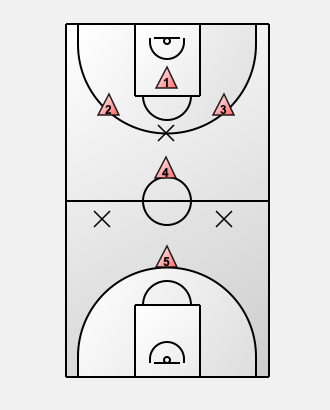Breaking a Full-Court Press

It does not matter if we are looking at juniors or seniors; a well-executed full-court press is one of the more daunting strategies that can be employed against a team. It is common for young or old players to freeze up when facing this tactic as a change-up. The fear of making a mistake or hurting the team further compounds the pressure we see when this tactic is first employed.
As a coach, there are a few points to consider helping your team to be able to meet this challenge head-on and even expose the strategy against the opposition. At the younger levels of basketball, players will be more likely to struggle with adjusting to the game when a press happens. A coach will need to call a time-out and reset the team’s focus on how to beat and even capitalise on this defensive tactic.
Plan to Succeed, or Plan to Fail
The employment of a press against a team is not uncommon. When planning out the strategies and tactics to be employed before the start of a season, having a press breaker should be on that list of plays you have the team exposed to before the start of the season.
Gaming coaching plays a part in this strategy. A coach must be able to examine what is happening in the game and see where there is a weakness in the opposition and a subsequent advantage to be created. When in a game situation where a press is being employed a coach must look to see how the press is being initiated.
Trapping on the Catch or the Dribble
A full-court press or trap is initiated in one of two ways. Either on the catch, so when the outlet or guard catches the ball, the two responsible defenders initiate the trap immediately.
The alternative to this action is the trap is implemented when the outlet starts to dribble the ball.
Where these two different actions are significant for the offense is that the timing of the pressure release passes out of the trap will be quicker against a press that is initiated on the catch. This will mean there need to be options for the outlet to pass to within the first action of the press breaker. In a practical sense, this must also be considered when choosing which press breaker transition offense to utilise. A coach will need to know where the primary and secondary passing targets will be depending on the speed at which the trap is being actioned.
Where is the Vacant Space?
When looking at a full-court press or any trapping situation, a coach must be able to identify what action is being employed. Is the dribble or pass being forced down the middle of the floor or the sideline? Look at where the trapping action happens, which will provide some clues on where the primary and secondary space areas can be found against any press.

In Diagram 1 we have a full-court 1-2-2 press. In this figure has three crosses marked representing the space that is ideal to flash cutters into, or have receivers placed to exploit areas that the trap does not want the ball to move into. In Diagram 2, a 1-2-1-1 full-court press is diagrammed. Again, the areas that are best to break down the trap are marked with a cross.

The secondary options are important because these provide the keys to turning any press against the opposition and creating an advantageous situation to attack the basket with more significant numbers.
What is to know about how to lock down your opponents with a full-court press?
The Goal is not to Break the Press, but Score
The final phase of a good press breaker is to attack the basket with a numbers advantage and score against the aggressive pressing action. Many press breakers don’t do this as a core objective. In the earlier diagrams, the further the players are placed down the court, the better the opportunity is to attack once the initial trapping areas have been avoided. These players can be positioned in the backcourt, but the ideal situation is to have them over halfway and ready to attack as soon as they catch and face up to the basket.
In summary, when a press is employed, it is often left to the coach to trigger a response within the team. Seeing what is happening on the floor, thinking about how the press can be exploited against the defense. Then having effective communication to talk to an action plan of how to deal with the trapping scenario is vital.


Leave a Reply